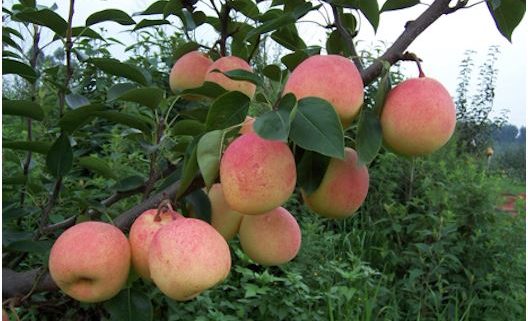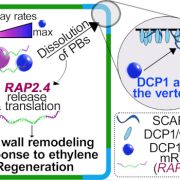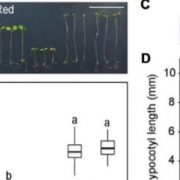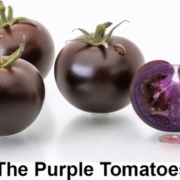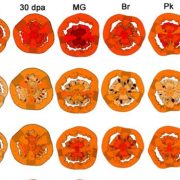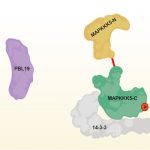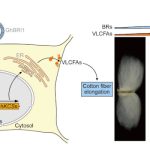Ethylene Inhibits Pear Anthocyanin Synthesis
Ni et al. explore the relationship between ethylene, the ERF9 and RAP2.4 transcription factors, and anthocyanin biosynthesis in pear.
By J. Ni1,3,4, S. Bai1,3,4 and Y. Teng1,2,3,4
1 Department of Horticulture, Zhejiang University, Hangzhou, Zhejiang 310058, PR China
2 Hainan Institute of Zhejiang University, Sanya, Hainan 572000, PR China
3 Zhejiang Provincial Key Laboratory of Integrative Biology of Horticultural Plants, Hangzhou, Zhejiang 310058, PR China
4 The Key Laboratory of Horticultural Plant Growth, Development and Quality Improvement, the Ministry of Agriculture of China, Hangzhou, Zhejiang 310058, PR China
Background: The red coloration of many fruits is the result of anthocyanin accumulation. The biosynthesis of anthocyanins is influenced by internal and environmental factors, including phytohormones. Ethylene induces anthocyanin biosynthesis in most fruits, including apples, grapes and plums. However, ethylene inhibits anthocyanin biosynthesis in pears with different genetic backgrounds. Preliminary studies suggest that the transcription factors PpETHYLENE RESPONSE FACTOR9 (PpERF9) and PpRELATED TO APETALA2.4 (PpRAP2.4) act upstream of PpMYB114, which encodes a key transcription factor in anthocyanin biosynthesis in pears. PpERF9 and PpRAP2.4 play important roles in ethylene-mediated inhibition of anthocyanin biosynthesis and PpERF9 function is associated with histone modifications.
Question: What is the relationship between ethylene and the PpERF9 and PpRAP2.4 transcription factors? How do PpERF9 and PpRAP2.4 regulate anthocyanin biosynthesis in pear fruit? How does PpERF9 regulate anthocyanin biosynthesis in pear fruit through histone modification?
Findings: Our four major findings are: 1) Ethylene induces the expression of PpERF9 while inhibiting the expression of PpRAP2.4 in pear fruit. 2) PpERF9 directly inhibits PpMYB114 expression by binding to its promoter, thereby repressing anthocyanin biosynthesis in pear fruit. 3) PpRAP2.4 activates PpMYB114 expression by binding to its promoter, thereby inducing anthocyanin biosynthesis in pear fruit, while PpERF9 directly represses the expression of PpRAP2.4, thus forming a PpERF9-PpRAP2.4-PpMYB114 regulatory circuit. 4) PpERF9 interacts with the co-repressor PpTOPLESS1 via EAR motifs to form a complex that removes the acetyl group on histone H3, maintaining low levels of acetylated histone H3 in the promoter regions of PpMYB114 and PpRAP2.4. Acetylated H3 is associated with the suppressed expression of these two genes and decreased anthocyanin biosynthesis in pear fruit.
Next step: It will be interesting to explore how ethylene inhibits the expression of PpMYB10, which encodes another important transcription factor regulating anthocyanin biosynthesis in pear fruit.
Junbei Ni, Simai Wang, Wenjie Yu, Yifei Liao, Chen Pan, Manman Zhang, Ruiyan Tao, Jia Wei, Yuhao Gao, Dongsheng Wang, Songling Bai, Yuanwen Teng. (2023). The ethylene-responsive transcription factor PpERF9 represses PpRAP2.4 and PpMYB114 via histone deacetylation to inhibit anthocyanin biosynthesis in pear. https://doi.org/10.1093/plcell/koad077


